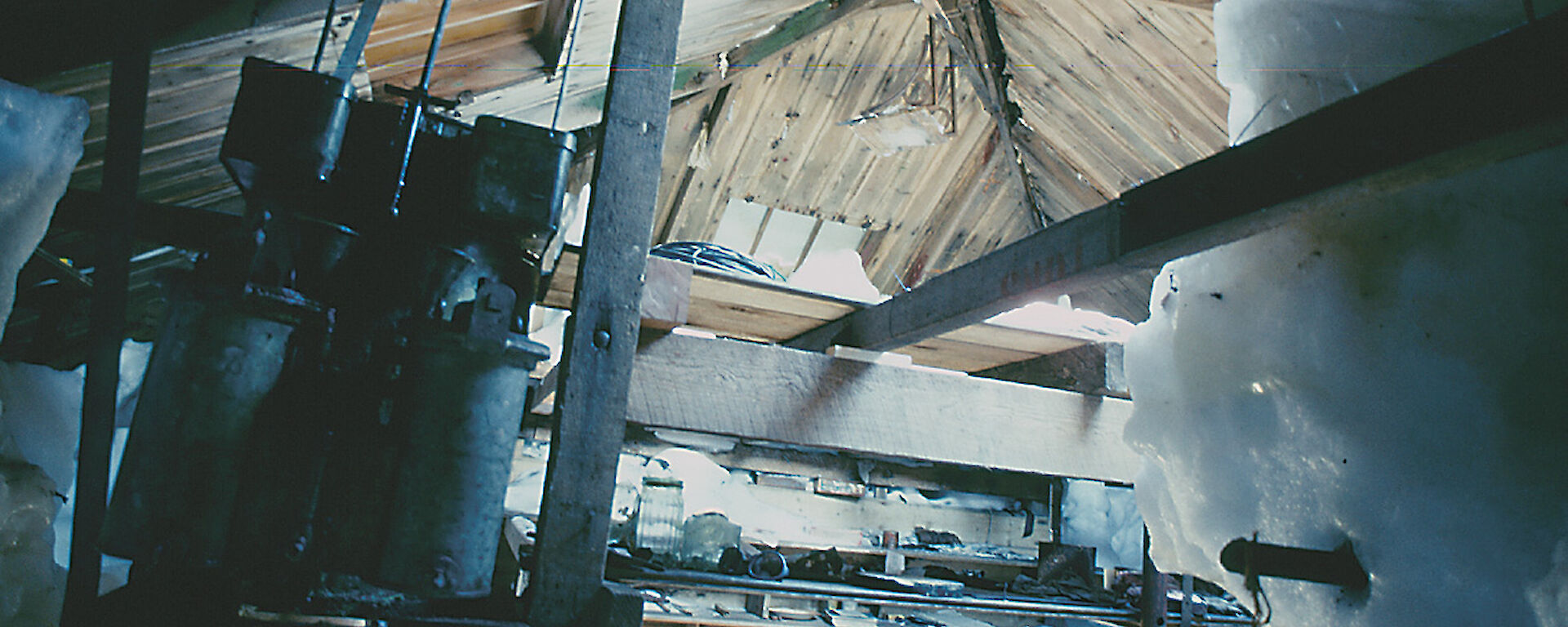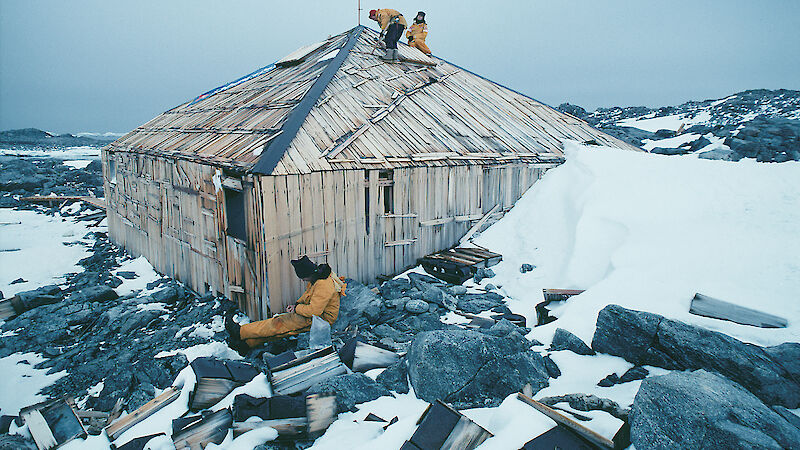A joint venture involving the Federal Government and the AAP Mawson’s Huts Foundation completed the third phase of a conservation works program in January 2001 to save the historic huts used by the Australasian Antarctic Expedition (AAE) 1911–14 led by Australia’s most acclaimed Antarctic scientist and hero, Sir Douglas Mawson.
From the huts that comprised the winter quarters, sledging parties ranged south, east and west during 1912 exploring and mapping territory previously unknown. The success of the AAE’s scientific program laid the foundation for Mawson’s later British, Australian and New Zealand Antarctic Research Expedition conducted over two summers between 1929–31 when territorial claims to Antarctica were made in the name of the British monarch. These claims were subsequently handed over to the Australian government and are the origins of its current Antarctic program.
Mawson’s own sledging journey ended in disaster and almost cost him his life when his two companions, Ninnis and Mertz, died in separate incidents leaving him to struggle alone the 160 kilometres to the huts at Cape Denison. Arriving a month after the death of Mertz, in a shocking state of starvation and exposure, Mawson was forced to remain in Antarctica for another year with six colleagues left behind to search for his sledging party.
The ship Aurora had departed only hours before Mawson’s arrival at the huts, the Master, Captain John K Davis, having waited longer than was prudent to collect the other party of the AAE hundreds of kilometres west on the Shackleton Ice Shelf. Although a message reached Davis as the Aurora steamed away and he returned to collect Mawson and the rescue party, the notorious weather of Cape Denison intervened and Davis was forced to make the difficult decision to leave Mawson's party and make for the more vulnerable western party which he successfully retrieved three weeks later. The Aurora returned a year later for Mawson and his men.
The main living hut, and outposted smaller huts used by members of the expedition for a variety of scientific measurements, remain at Cape Denison despite little attention in the 90 years in which they have endured the most demanding of climatic conditions. Nestled into the landscape, they are a symbol of Australia’s earliest Antarctic expedition and unique examples of the few remaining wooden huts used by explorers of the Heroic Era of Antarctic exploration. Although seen by very few people, they are the nation’s richest Antarctic heritage buildings. That they have survived, is a tribute to their design and construction, completed as it was by young scientists with negligible practical building experience.
Working in partnership with the Australian Antarctic Division which is responsible for management of the Historic Site, and the Australian Heritage Commission, the Foundation has conducted three expeditions and commissioned a conservation management plan for the site.
The latest expedition returned to Hobart in mid-January after a successful stay at Cape Denison during which all of the waste from several previous expeditions was removed, repairs and maintenance to the huts carried out, and an archaeological survey and environmental monitoring program achieved.
Rusty fuel drums, gas cylinders, old ration packs dating back to the 1960s, camping gear and two cargo containers and their contents were transferred to the relief ship Sir Hubert Wilkins and transported to Australia for disposal. Planned repairs to the internal roof of the workshop section of the winter quarters were found to be unnecessary after excavation of the accumulated snow and ice of the past 23 years revealed that the new external cladding on the roof installed by the Foundation’s 1997, expedition, had stabilised the structure of the workshop roof and made the potentially disruptive collar tie and rafter replacement work redundant.
The new workshop roof remained drift free during a blizzard experienced by the latest expedition, in contrast to the main living hut roof which allowed considerable ingress of snow during the same blizzard. Despite the substantial repair work completed by the 1997 group which included skylights and ridge capping, more than 180 kg of snow and ice had entered this section of the hut in the intervening three years.
Uncovered for the first time since Mawson left the huts was the hatch that leads to the under floor space where frozen meat and other produce was stored. Although it was not possible to open the hatch due to the risk of damaging it, small inspection holes were drilled confirming that the area under the floor is solid ice as expected from repeated thawing and re-freezing over the past 90 years. The stability provided by the presence of ice under the floor and the solid wall of permanent ice two metres thick that fills the verandah on three sides of the main living hut and workshop, means the huts are remarkably stable as measurements by the 1997 group proved. They revealed that the internal dimensions and stability of the winter quarters has remained as exact as the day it was completed.
The longer term management and conservation of the historic huts is about to be decided as the government agencies and the Foundation wrap up the Conservation Management Plan which has just concluded a two month period of public consultation.
The most controversial issue surrounding the conservation of the huts has been whether or not the large amount of snow and ice inside the main living hut (about 60% of the space) and adjoining workshop should be removed. Concern for the artefacts inside (if the relative humidity and temperature are changed by the removal of snow and ice) and potential risks to the structural stability of the huts are important considerations that have greatly restricted the options for returning the huts to their former condition.
But the environmental data (collected by electronic monitoring equipment over the past three years), the work of the last two expeditions and observations by heritage building specialists Godden Mackay Logan, and the carpenters and architects employed by the Foundation, suggest that the internal space should be excavated to expose the many artefacts of the AAE thought to be entombed in the ice and not seen since 1931 when Mawson last visited. Replacing the wooden battens that Mawson’s men tacked on the joints of the tongue and groove Baltic Pine timber on the roof (which have mostly blown away) would significantly reduce the ingress of snow and ice into the space. Such action would reveal the full extent of the winter quarters, and allow visitors to appreciate the full spirit of this extraordinary place.
Rob Easther
Expedition Leader, AAP Mawson’s Huts Foundation and
Field Operations Manager, Australian Antarctic Division



